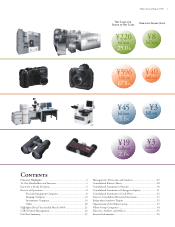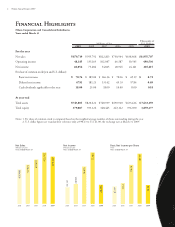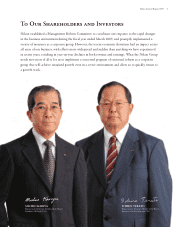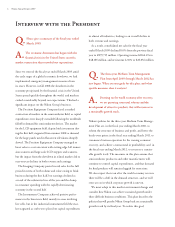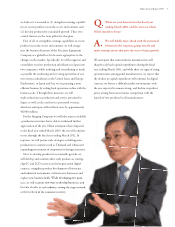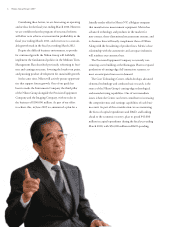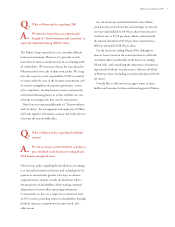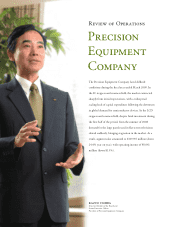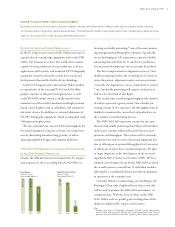Nikon 2009 Annual Report Download - page 13
Download and view the complete annual report
Please find page 13 of the 2009 Nikon annual report below. You can navigate through the pages in the report by either clicking on the pages listed below, or by using the keyword search tool below to find specific information within the annual report.
IC Scanner capable of mass production of cutting-edge semiconductors
at 45 nm applications and beyond
ArF Immersion Scanner NSR-S610C (First shipment in February 2007)
The NSR-S610C, with a high projection lens NA of 1.30, is the world’s fi rst
immersion scanner for mass production of 40 to 45 nm devices.
Nikon‘s proprietary Local Fill Technology based on immersion expertise helps
to eliminate immersion defects such as bubbles, water spots, and immersion-
induced particle contamination, as well as to suppress evaporation of the
immersion liquid, and to prevent immersion-induced problems that affect the
alignment accuracy. Also, the Tandem Stage utilizes two stages with different
functions—Exposure and Calibration—to achieve high throughput and precision,
and ensure a stable exposure process.
Product Spotlight
Precision Equipment Company
ArF Immersion Scanner NSR-S610C
LCD Scanner FX-101S
Enhanced productivity to meet growing demand
for 10th generation glass plates
LCD Scanner FX-101S (First shipment in the year ended March 2009)
The FX-101S, incorporating Nikon‘s proprietary multi-lens projection optical system, is an LCD exposure system for
production of 10th generation large glass plates.
LCD televisions have spread rapidly in recently years, and screen sizes have become larger. Digital signage, one
of the most prominent examples of large-scale information displays, has also
been the focus of much attention. The manufacturing systems
for large-scale LCD panels require greater production effi ciency
than ever before. The FX-101S offers high productivity through
its lithography of 10th generation glass plates, which can yield
six to eight panels, in sizes ranging around 60 inches.
Immersion
exposure
Pure water
Wafer stage
Wafer
Scanning motion
Projection lens
Liquid recovery Liquid supply
Wafer
About
1
mm
Projection lens
ArF excimer laser
Pure water
Introduction to Immersion Photolithography
The performance of a lens used in a stepper is indicated by its NA (numerical
aperture) fi gure. The larger the NA fi gure, the higher the resolution. In air, an NA
of around 0.9 is considered the physical limit. However, by immersing the space
between the lens and wafer in pure water or other liquid with a higher refractive
index than air, it is possible to increase the NA to 1.0 or higher, resulting in
extremely high resolution. This technique is called “ immersion lithography.”
Immersion Lithography Concept
Nikon Annual Report 2009 11


